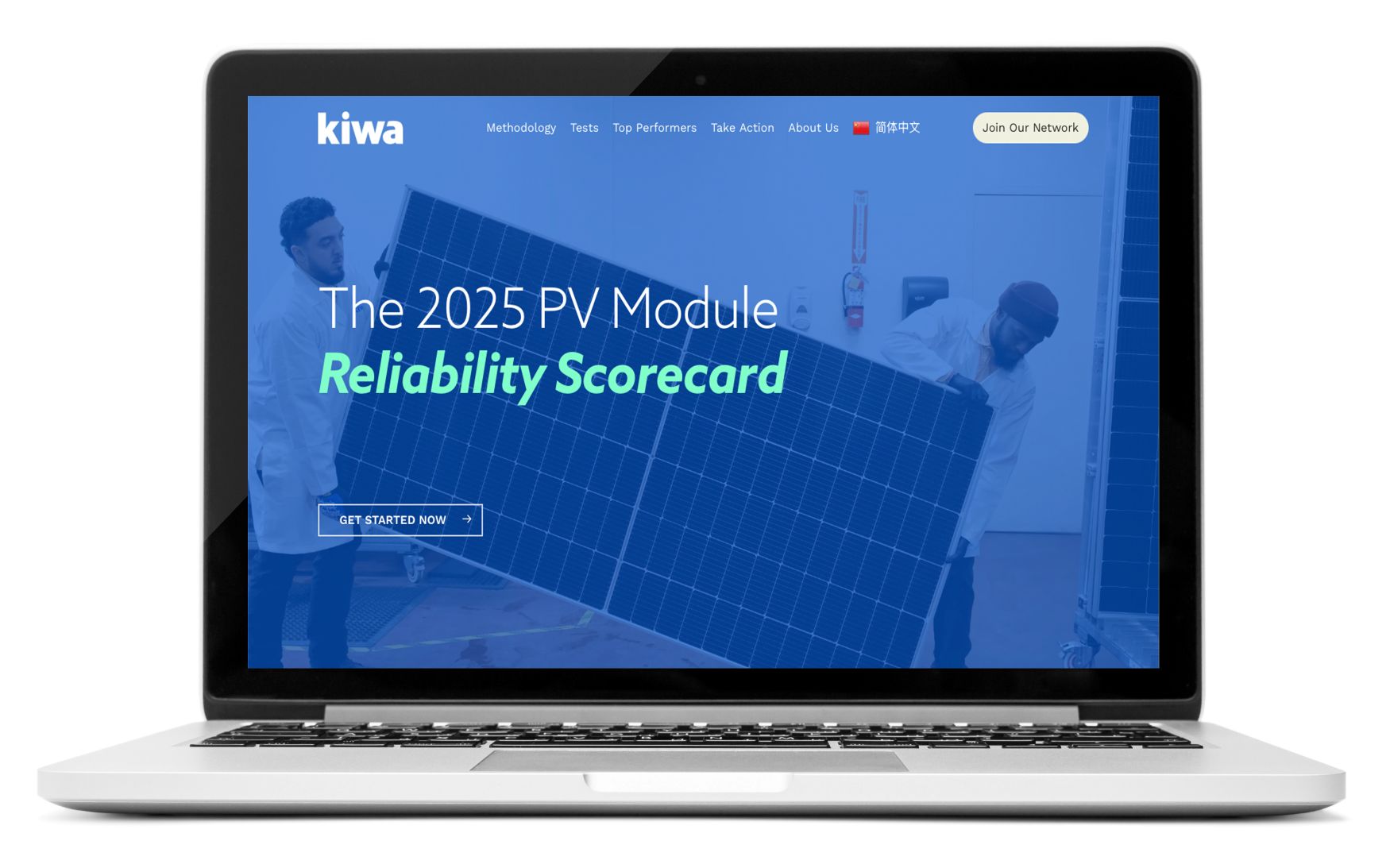100,000+ Readers Use This Scorecard to Make Solar Decisions
By Tristan Erion-Lorico, VP of Sales and Marketing, Kiwa PVEL
“The PV Module Reliability Scorecard is our yearly publication highlighting the results of independent reliability and performance tests conducted on commercially available solar modules. The Scorecard has been designed to be accessible; it’s written in a way that non-technical individuals can read and understand why certain tests matter and what they mean for solar module reliability. The 2025 edition marks our eleventh consecutive year publishing it.
The Scorecard actually started as a partnership with Greentech Media, which later became part of Wood Mackenzie. That first edition was more of a technical white paper, but over time, we’ve made it more engaging and visual. In 2018, we fully redesigned it to include more images, color, and clarity. That shift transformed the Scorecard from a read-only resource for module experts into a vital tool for developers, financiers, and other decision-makers.
A truly global reach
In fact, since moving the Scorecard online in 2021, we’ve been able to track its reach — more than 100,000 unique IP addresses from over 170 countries have accessed the 2024 edition. We’ve received messages from people all over the world, including someone in Sri Lanka who used it to help install solar panels on the roof of an airport. Even Kiwa’s own chief integration officer told us he used the Scorecard to install panels in his home.
Testing real-world performance
IAM (Incident Angle Modifier) testing is one of the newer additions we’ve highlighted, first in 2024 and again in 2025. It assesses how a module performs as the angle of sunlight shifts throughout the day, especially on fixed-tilt systems. Alongside temperature and light intensity variation tests, IAM helps model real-world performance in greater detail.
This level of insight is especially valuable for utility-scale projects, where even a 2% performance difference can translate into major financial implications for companies (or even individuals). That’s why our data is primarily geared toward large-scale buyers; however, curious homeowners may still find value in it.
Deeper insights for partners
In addition to the public Scorecard, we offer a Premium Partner program. While the Scorecard provides a high-level summary, Premium Partners gain access to detailed results and reports, including actual degradation figures, extended reliability test data, and more. It’s updated quarterly and provides a more complete picture of how products perform.
All of this is supported by our Product Qualification Program (PQP), which includes 11 tests going well beyond basic certification. Standard certification ensures a baseline level of safety and minimal performance, but it doesn’t predict how a module will perform over 25 years on a rooftop or in extreme conditions. That’s where PQP shines.
Moreover, we update the test plan every two years based on new field data, technology trends, and feedback from buyers and experts across Kiwa and the industry.
Proving quality with data
Of course, most module manufacturers say they have the best quality. Our job is to confirm those claims with independent, transparent, and thorough testing. As our Scorecard grows in reach, we see more global adoption. Manufacturers from around the world now recognize the value of participating. It’s no longer just about the U.S. market, in the 2025 edition, we have 50 manufacturers globally listed as Top Performers.
A mark of quality
Being named a Top Performer in the Scorecard has become a badge of honor for manufacturers. They use this recognition in their marketing: on datasheets, trade show booths, even in email signatures! I’ve also seen the Top Performer logo displayed at trade shows in meter-high banners.
Raising the Kiwa profile
I am very proud that our work has elevated the Kiwa brand while serving the solar industry with trusted insights. I don’t think I could work anywhere else in the solar industry and have the same level of influence. From a climate change perspective, solar is a proven solution, and I’m proud to contribute. Whether through the Scorecard or our day-to-day collaboration with global partners, we know we’re helping people make better decisions for a more sustainable future.”
Explore how trusted data and performance insights are transforming sectors — only in Trace Magazine.
Read more articles from the Trace Magazine
CPR Compliance — Your Last Chance to Act

LCA + EPD: The Acronyms That Will Shape the Future

Due Diligence Is Now a Business Strategy

EU Battery Regulation: Deadlines Are Closer Than You Think

Food Safety Meets Sustainability: What’s Next for the Industry

From Plastic Waste to Certified Reuse: The Path to Circularity

5 Sustainability Roadblocks for Heat Pump Makers — And How We Solve Them
